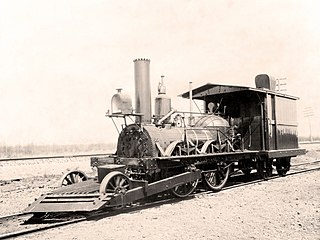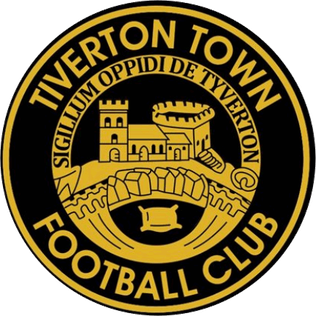
The Science and Industry Museum in Manchester, England, traces the development of science, technology and industry with emphasis on the city's achievements in these fields. The museum is part of the Science Museum Group, a non-departmental public body of the Department for Digital, Culture, Media and Sport, having merged with the National Science Museum in 2012.

Mid Devon is a local government district in Devon, England. The council is based in the district's largest town of Tiverton. The district also contains the towns of Bampton, Bradninch, Crediton and Cullompton, along with numerous villages and surrounding rural areas. Part of the district lies within the Blackdown Hills, an Area of Outstanding Natural Beauty.

Tiverton is a town and civil parish in Devon, England, and the commercial and administrative centre of the Mid Devon district. The population in 2019 was 20,587.

Derick Heathcoat-Amory, 1st Viscount Amory,, was a British Conservative politician and member of the House of Lords.

Blundell's School is an independent co-educational boarding and day school in the English public school tradition, located in Tiverton, Devon. It was founded in 1604 under the will of Peter Blundell, one of the richest men in England at the time, and moved to its present site on the outskirts of the town in 1882.

John Bull is a historic British-built railroad steam locomotive that operated in the United States. It was operated for the first time on September 15, 1831, and became the oldest operable steam locomotive in the world when the Smithsonian Institution ran it under its own steam in 1981. Built by Robert Stephenson and Company, it was initially purchased by and operated for the Camden and Amboy Railroad, the first railroad in New Jersey, which gave it the number 1 and its first name, "Stevens". The C&A used it heavily from 1833 until 1866, when it was removed from active service and placed in storage.

STEAM – Museum of the Great Western Railway, also known as Swindon Steam Railway Museum, is housed in part of the former railway works in Swindon, England – Wiltshire's 'railway town'. The 6,500-square-metre (70,000 sq ft) museum opened in 2000.

Tiverton Town Football Club are an English football club based in Tiverton, Devon. The club are currently members of the Southern League Premier Division South and play at The Ian Moorcroft Stadium, previously known as Ladysmead.

Knightshayes Court is a Victorian country house near Tiverton, Devon, England, designed by William Burges for the Heathcoat-Amory family. Nikolaus Pevsner describes it as "an eloquent expression of High Victorian ideals in a country house of moderate size." The house is Grade I listed. The gardens are Grade II* listed in the National Register of Historic Parks and Gardens.

Locomotion, previously known as Locomotion the National Railway Museum at Shildon, is a railway museum in Shildon, County Durham, England. The museum was renamed in 2017 when it became part of the Science Museum Group.

John Heathcoat was an English inventor from Duffield, Derbyshire. During his apprenticeship he made an improvement to the warp-loom, so as to produce mitts of a lace-like appearance. He set up his own business in Nottingham but was forced to move away to Hathern in Leicestershire, and after this new factory was attacked by former Luddites in 1816 he moved the business to Tiverton in Devon where it became most successful and established the Tiverton lace-making industry.

The GWR 1400 Class is a class of steam locomotive designed by the Great Western Railway for branch line passenger work. It was originally classified as the 4800 Class when introduced in 1932, and renumbered in 1946.

Both the Ulster Folk Museum and Ulster Transport Museum are situated in Cultra, Northern Ireland, about 11 kilometres (6.8 mi) east of the city of Belfast. Now operating as two separate museums, the Folk Museum endeavours to illustrate the way of life and traditions of the people in Northern Ireland, past and present, while the Transport Museum explores and exhibits methods of transport by land, sea and air, past and present. The museums rank among Ireland's foremost visitor attractions and is a former Irish Museum of the Year. The location houses two of four museums included in National Museums NI.
Kitson and Company was a locomotive manufacturer based in Hunslet, Leeds, West Yorkshire, England.

East Devon College was a further education college situated in Tiverton, Devon, England. The college operated on four sites; the main campus and various annexes being located in Tiverton, with three additional sites being located in Honiton, Exmouth and Tiverton. In 2005, the college enrolled 3,144 learners, of which 877 were full-time. Around 80% of those learners were aged between sixteen and eighteen years of age. The college's motto was "Maximising your potential", and its aim was "to develop skills, knowledge and confidence for all".

Tiverton railway station served the town of Tiverton, Devon, England. It opened in 1848 as the terminus station of a broad gauge branch line from the Bristol and Exeter Railway main line: the main line junction station four miles away had originally been called Tiverton Road but was renamed as Tiverton Junction when the branch opened.
Chevithorne is a small village near Tiverton, Devon. It lies three miles to the North East of Tiverton. 'Chenetorne' is identified in two entries of Domesday Book: The first entry tells us the manor of Chevithorne, had a taxable value 0.6 geld units, and worth £2.3 to the lord in 1086. The holding was populated by 4 villagers. 2 smallholders. 8 slaves. There was enough ploughland for 2 lord's plough teams. and 2 men's plough teams and had, in addition, 0.12 lord's lands. 8 acres of meadow. 15 acres in pasture. and 3 acres of woodland. There were also 10 cattle and 60 sheep. The 'Lords' of this holding in 1086: are named as Alwin, and Beatrix . Ralph de Pomeroy was Tenant-in-chief, He was a large land holder in Devon, and his brother William held several properties as both lord and Tenant-in-Chief.

The Nottingham Industrial Museum is a volunteer-run museum situated in part of the 17th-century stables block of Wollaton Hall, located in a suburb of the city of Nottingham. The museum won the Nottinghamshire Heritage Site of the Year Award 2012, a local accolade issued by Experience Nottinghamshire. The Museum collection closed in 2009 after Nottingham City Council withdrew funding, but has since reopened at weekends and bank holidays, helped by a £91,000 government grant, and run by volunteers. The museum contains a display of local textiles machinery, transport, telecommunications, mining and engineering technology. There is a display of cycles, motorcycles, and motor cars. There are examples of significant lace-making machinery. It also houses an operational beam engine, from the Basford, Nottingham pumping station.

The Rewari Railway Heritage Museum is a railway museum in Delhi NCR at Rewari city in Haryana, India. Built in 1893, it is the only surviving steam locomotive shed in India, and houses some of India's last surviving steam locomotives as well as the world's oldest still-functional 1855-built steam locomotive the Fairy Queen. It is located 400 m (1,300 ft) north of the entrance of the Rewari railway station, 50 km (31 mi) from Gurgaon and 79 km (49 mi) from the National Rail Museum at Chanakyapuri in New Delhi.



















